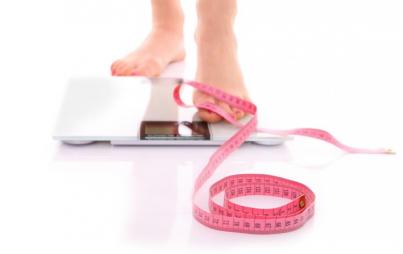
Credit: Andrew Thomas Huang's YouTube Channel
Remember back in 2007 when people would sit around a laptop for hours and watch YouTube videos in between sips of cheap, terrible beer? Or was that just me? In any case, the video-sharing site excelled at promoting the work of unknown filmmakers.
One particular video from that time has stuck with many, and this throwback Thursday we are honoring it for its still-pertinent message about our societal obsession with beauty. "Dollface," by Andrew Thomas Huang, features a jack-in-the-box-resembling robot who wants to emulate the vision of beauty presented on TV. Quite quickly this desire to emulate descends into a deadly struggle. And the last image is . . . uh, memorable.
What's most disturbing about this amazing vid is the reality it represents. It's no secret that our culture places an unhealthy emphasis on beauty. Want to sell a 'mile high bacon thickburger'? Better get a gorgeous woman (who could never eat that thing and keep her rockin' bod) to ensure profits for your corporation. But beyond beauty being used for capitalistic promotion, per a recent Tinder-related experiment where participants met up with matches who'd donned fat suits, a woman not being slim was "very upsetting" (among other appalling things) and apparently not worth being shown respect.
My proposal: devalue the worth of beauty. It is dangerous.
Reason #1: Eating Disorders
Yes, there is a genetic component to eating disorders. They are considered a mental illness. Yet, there is also evidence that the manifestation of eating disorders is the work of both nature and nurture. The environment—like, you know, one plagued with images of rail thin ladies 24/7—has a way of influencing those already predisposed. And anorexia has a scary-high mortality rate: up to 20%. This makes it far deadlier than stage II breast cancer.
We can do better.
Reason #2: Plastic Surgery Complications And Consequences
We're not referring to a botched "deviated septum" surgery on a celeb—increased depression and anxiety is relatively common among plastic surgery patients. Guess what, though? Recent years have seen an increase in plastic surgeries, spurred by insecurities and bullying. As anxiety and insecurity are linked afflictions, this is a scary thought. All this isn't to say plastic surgery itself is inherently evil, but that those who opt to get it may, in doing so, worsen issues already affecting them. This can lead to suicidal thoughts—a terrifying risk.
Reason #3: Corsets
Yeah, yeah—women don't generally wear these atrocities any more. And the bedroom lingerie of today hardly reflect the originals. Not by a long shot. Once upon a time, these babies literally altered the placement of internal organs and reshaped ribs. Fainting, wheezing and, well, dying due to corset-related complications were all common. But at one point, corsets were a fashion "must."
The reason I ended with this point is to raise the question: how will future generations perceive the first two points? Will they laugh at our skinny models and give sympathetic sighs to its victims? Will cosmetic surgery continue to gain in terrifying popularity?
Check out "Dollface" to get the important convo started:






